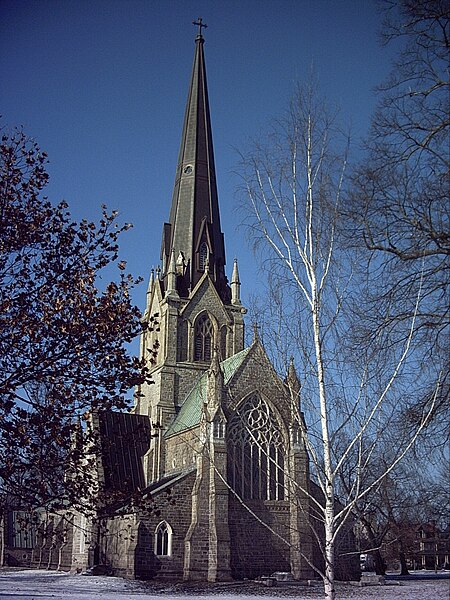British Canadians primarily refers to Canadians who were either born in or can trace their ancestry to the British Isles, which includes the nations of England, Ireland, Scotland, Wales, and Northern Ireland.
A reconstruction of Norse buildings at the UNESCO listed L'Anse aux Meadows site in Newfoundland, Canada. Archaeological evidence demonstrates that iron working, carpentry, and boat repair were conducted at the site.
Scottish-Canadian Lord Strathcona drives the last spike of the Canadian Pacific Railway at Craigellachie, November 7, 1885.
English Canadians, or Anglo-Canadians, refers to either Canadians of English ethnic origin and heritage or to English-speaking or Anglophone Canadians of any ethnic origin; it is used primarily in contrast with French Canadians. Canada is an officially bilingual country, with English and French official language communities. Immigrant cultural groups ostensibly integrate into one or both of these communities, but often retain elements of their original cultures. The term English-speaking Canadian is sometimes used interchangeably with English Canadian.
The Canadian flag flying at the Maritime Museum of the Atlantic, located at Halifax, Nova Scotia
Christ Church Cathedral, Fredericton, construction began in 1845
The Jack Pine by Tom Thomson
Tommy Douglas (centre left).






